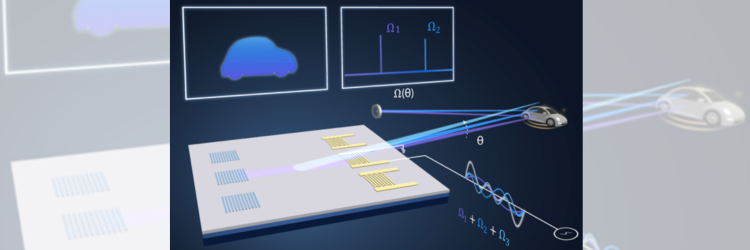Researchers Create Smaller, Cheaper LiDAR Tech
A new approach to LiDAR technology invented by University of Washington researchers resides on a computer chip and uses sound waves running over its surface to steer a laser beam. It allows self-driving cars to see objects like pedestrians and other vehicles further away.
The researchers developed a much smaller and less costly form of LiDAR with no moving parts, a potential game-changer for many technologies.
Until now, these laser-based systems required moving parts, adding weight, complexity, durability, and expense. A research study published in the journal Nature describes how the team developed a way to use quantum effects to create LiDAR on a chip.
The enormous difference with the LiDAR on a chip is the laser beam it emits can be bent using quantum effects. Safe for eyes, the beam passes barely above the surface of the chip. An inter-digital transducer (IDT) excites acoustic waves on the chip, and the generated vibrations “steer” the beam back and forth, according to their frequencies, with the movement occurring continuously or in steps.
The beam reflects off objects in the environment, returning to the LiDAR, where a detector receives the beam. Software interprets the data and builds an image of the reflected object.
Dubbed “acousto-optic beam steering,” the chip generates high-frequency sound pulses of a few gigahertz, beyond the audible range. The vibrations cause an emergent phenomenon called phonons. This quantum quasi-particle alters the deflection of the photons that make up the light beam, bending it much as a prism would.
The scattering of the light mainly remains in the plane of the chip’s two-dimensional waveguide. Light is moving through a quantum-scale medium created by the vibrations. The phonons alter the course of the beam according to their frequency so that it sweeps across an angle resulting in about a 20-degree field of view.
The vibrations create the equivalent of a diffraction grating, with the phonons altering the angle and wavelength of the laser’s coherent light.
The system has a range of about 110 meters. Traveling at normal highway speeds, an autonomous vehicle typically needs a range 3x that. The team expects that in another year they will reach the 50% efficiency required to achieve 300 meters. That range would give a vehicle traveling above 60 MPH enough time to respond to objects and situations in its path.
The commercial applications for this next-generation LiDAR include autonomous vehicles. Though Tesla CEO Elon Musk has famously said self-driving cars don’t need LiDAR, a low-cost version might change his mind.
The paper, “Frequency-angular resolving LiDAR using chip-scale acousto-optic beam steering,” was published in the journal Nature.

